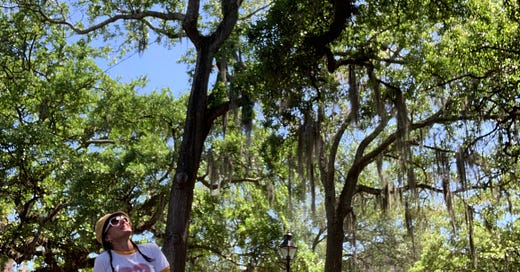Each one of Savannah’s 22 historic squares has its own character, for sure.
Orleans? The curlicue benches and constant burble of the fountain make a weekday afternoon stroll feel fancy. Crawford? Giving supreme boho vibes with its basketball court and gazebo. Lafayette? So gothic and elegant, you can practically feel Flannery O’Connor judging your shamrock shenanigans and poor grammar.
But none of them serve enchanting controversy like The Square Formerly Known As Calhoun.
Built in 1851 over the city’s first African American burial grounds and named for a particularly wicked slaveholder from South Carolina, this urban space was one of the last homages to Oglethorpe’s utopian urban plan, along with sister squares Whitefield and Troup. It’s the only Savannah square with all of its original surrounding homes and buildings still standing, including Wesley Monumental United Methodist Church and The Massie School, where every local public school student logs at least 47 field trips before matriculation.
The center brick courtyard, framed by live oaks and humming with birdsong, offers a calm respite, the square’s corners rustling with azalea shrubs and camellia trees. (As a matter of fact, intrepid photographer Jade McCully snapped me scrambling for the season’s last blooms in the southeast quadrant for the cover of the new book.)
It is one of the last places in Savannah that has remained practically unchanged, which for once is not necessarily a good thing.
Keep reading with a 7-day free trial
Subscribe to Savannah Sideways to keep reading this post and get 7 days of free access to the full post archives.




